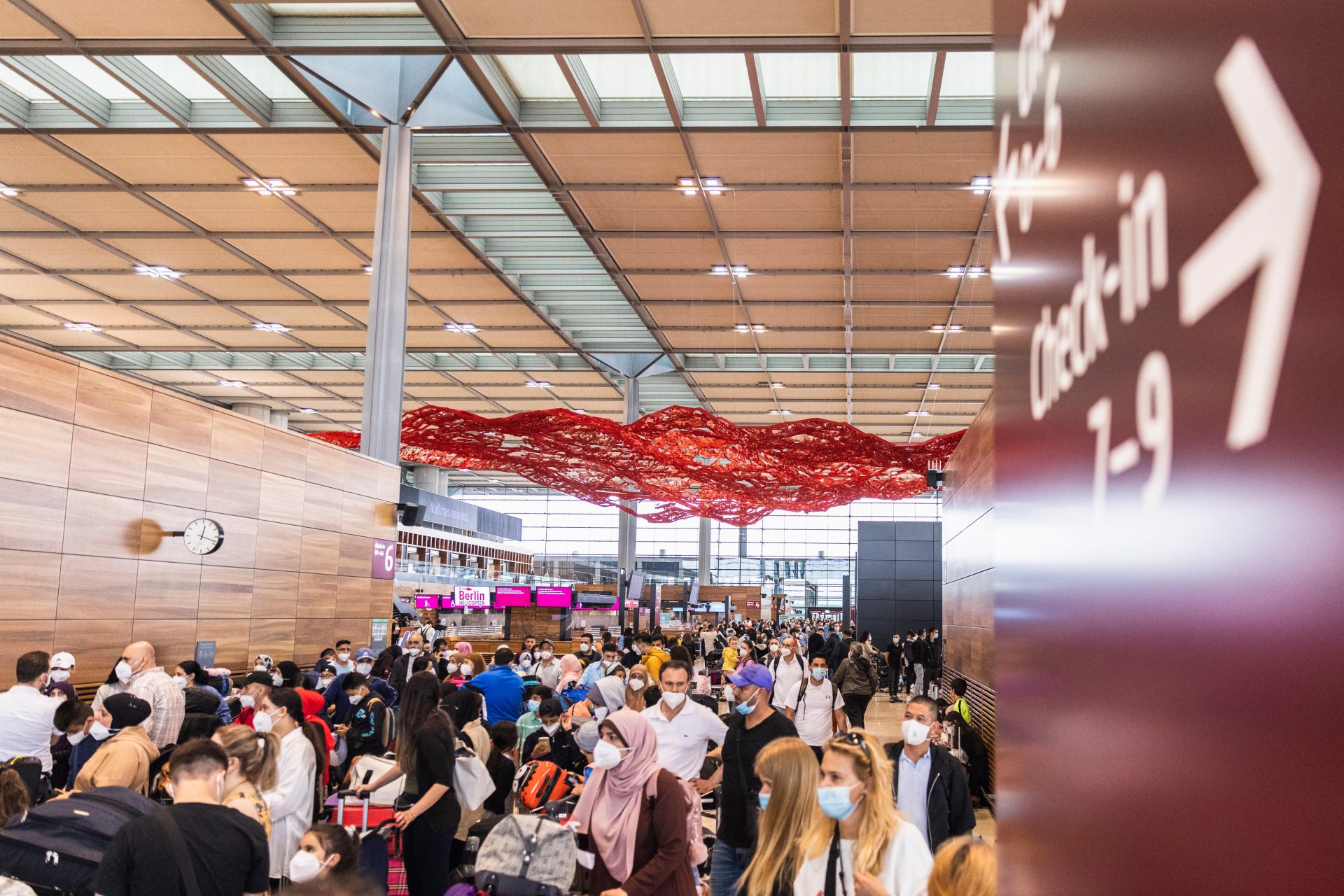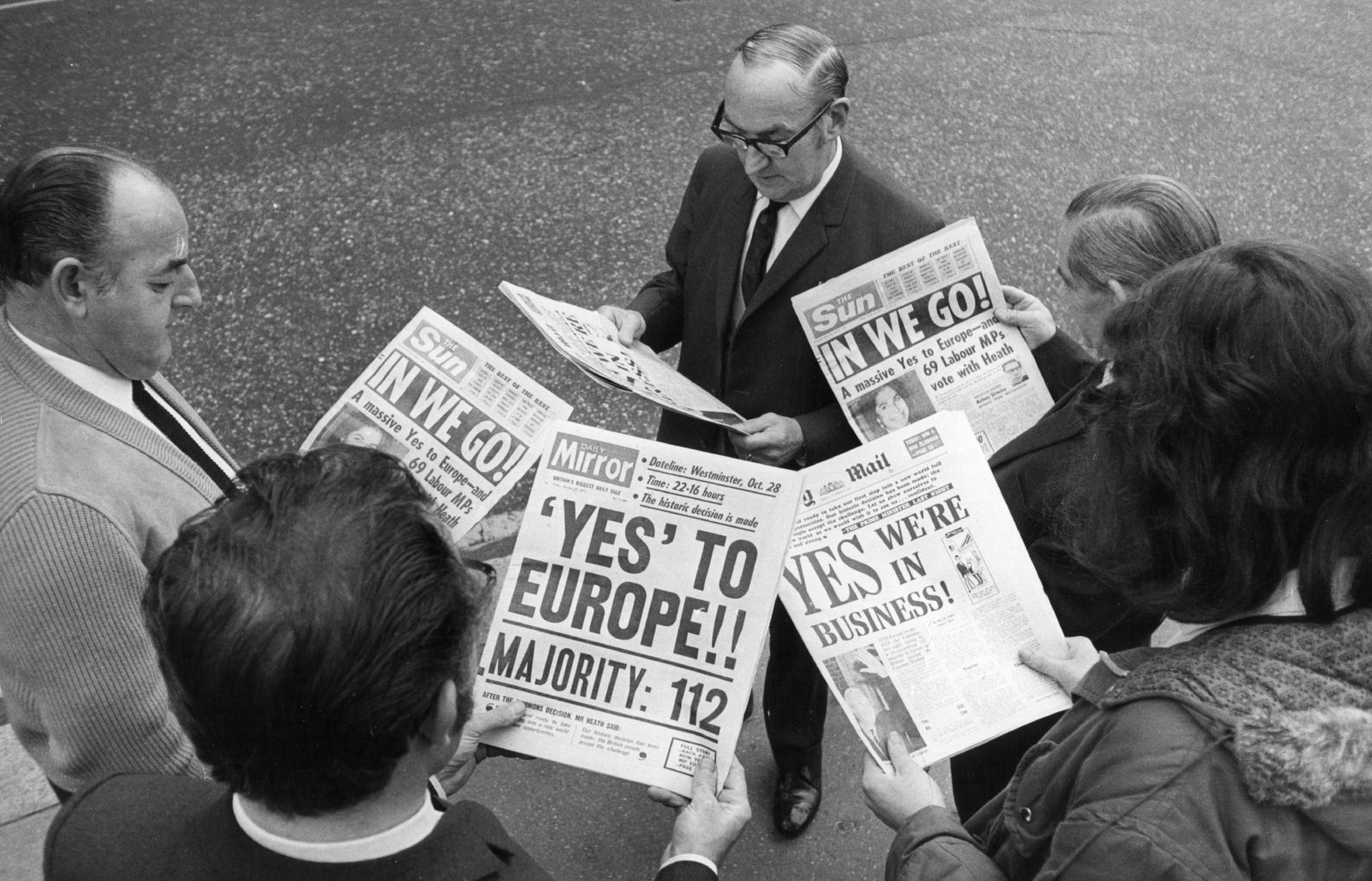The headline in the evening bulletin of RBB, the local TV station, said it all: Scheissladen. Shithole. Furious passengers were effing and blinding about the state of Berlin’s disaster of a new airport.
One man said he had been in a check-in queue for three hours and had moved forward five metres. Thousands have missed their flights, just as the country is embracing foreign travel again for the autumn half-term after 18 months of enforced staycations. This chaos is taking place even though the number of passengers flying is still only half of pre-pandemic levels.
BER, as it is known, is a national embarrassment. It was bad when it didn’t open. It was even worse when it did. It is not the only example of chronic failings of German infrastructure. But it is the most evocative, representing a capital city that all too often cannot get the basics right.
Every country has a history of grands projets going wrong, failing, spiralling massively over budget. Britain has a long list, from Wembley Stadium to HS2, from the Dome to Crossrail. Spain has its ghost towns that were built and never occupied. France planned a huge airport outside Nantes that never saw the light of day. But Germany?
The idea was straightforward enough. Divided Berlin had two airports, both built straight after the war, Tegel in the West and Schönefeld in the East. Both were hopelessly outdated.
The capital could not accommodate large jets. The main hub for intercontinental flights was Frankfurt, with Munich as a second option.
So small and overloaded was Tegel that the government was forced to keep its official jets at Cologne Bonn airport and fly them in whenever needed.
In 2006, with Berlin experiencing a building boom, the federal government and the region decided on a new site for a new airport, in the southeast close to Schönefeld. It was to be called the Willy Brandt Berlin-Brandenburg airport, BER for short.
The construction was signed off as completed in 2012. Invitations were sent out for the grand opening, with the chancellor to give the keynote speech.
Suddenly, the local official responsible for certifying the building’s fire safety called a halt. He had discovered that the supposedly sophisticated system of smoke detectors and automated alarmed fire doors was not working.
Amid much embarrassment, the start was delayed. A new management team was brought in. It discovered half a million faults, including dodgy cabling, all of which had to be removed.
In the intervening years, BER became a laughing stock, a Potemkin city that had to be kept going in order not to conk out. Its railway station ran one ghost train a day. In the airport hotel, a skeleton staff dusted rooms and turned on taps to keep the water supply moving. Luggage carousels were given a daily rotation. Indicator boards were switched on and off; they showed flights arriving and departing but were using data from other city airports.
So irked was the Brandt family that they asked for his name to be removed. Much has been written and said about the causes of the fiasco. Most of the chaos seems to have stemmed from having multiple layers of management. Nobody had the authority to make things happen.
It even inspired a board game. The object of the ‘crazy airport game’ is to waste as much money as possible. Players pick up cards with instructions such as to build escalators that are too short. Each of the examples it uses is based on what actually happened.
Finally, at the end of October 2020, it opened. There was no fanfare; it took place in the middle of the second wave of the pandemic when few people were flying; and there was nothing to celebrate. Politicians stayed away.
Brandt’s family were eventually placated and the name stayed.
On the same weekend, Tegel dispatched its final jet, and with it a chapter of Cold War history ended. On my last flight out that month, I didn’t quite a shed tear, but like the other passengers, I looked out wistfully onto the tarmac for the last time.
Berliners now talk about how much they miss Tegel. It was a marvel that this set of hexagons close to a canal in what was the French sector ever functioned. It always managed to, just.
Planes flew perilously close to houses. Within minutes of landing, passengers were out on the street. At its best, it took barely half an hour to get onto a departing plane.
Tegel was a London City airport for the 1950s. It probably had to go (and plans are afoot to turn it into a giant tech park), but not for this. Not for BER.
It takes longer to get there and far longer to get through. It is large, functional, dominated by dark wood and, even on quiet days it tests the nerves. When I flew out recently late on a Saturday night with barely anyone left in the place, I still had to queue.
The reasons cited for the latest mess? Job cuts due to pandemic redundancies; computer problems (the carousels continue to break down); lack of staff training; check-in desks that are too narrow; one in five employees on Covid-related or other sickies.
Two of BER’s three terminals are still not operating, and there don’t seem to be any plans to crank them into gear.
There is one small consolation for Berliners. Theirs is perhaps not the worst infrastructure meltdown. Stuttgart 21, a project for a new railway station and European main-line hub that, as its name suggests, was supposed to ring in the 21st century.
The scheme was agreed in 1994, but it took 15 years for construction to begin. The project is more ambitious than anything tried before, burying an entire railway station under a functioning city. It involves putting a seven-storey, 15,000-tonne building onto an entirely new foundation made of 40 pillars several metres high – just to dig a tunnel. It also requires the creation of 60km of tunnels through surrounding mountains.
Locals wanted a smaller-scale scheme and protested in court and on the streets against the demolition of the northern façade of the original station. The controversy was eventually settled by a referendum. The project won’t be completed before 2024. In the meantime, the entire city centre is a noisy mess. And nobody believes even that deadline will be met.
CITY OF AIRPORTS
Until 2008, Berlin was served by three main airports. That year Templehof, perhaps the most famous of the three, closed. It was extensively developed by the Nazis and was the main focus of activity during the Berlin Airlift of 1948-49. The site is now a recreational space for Berliners.
Tegel was constructed quickly during the Airlift to relieve pressure on Templehof. Runways at the older site were also too short for jet aircraft that followed in the 1950s.
The third, Schönefeld, was developed in the 1930s, to serve a factory making aircraft for the Luftwaffe. After the war, the Soviets built a civilian airport there. During the Cold War, Schönefeld was the only Berlin airport that was open to airlines from around the world. But Lufthansa could not land there anyway, because the GDR wanted to preserve the market for its own airline, Interflug.
John Kampfner is the author of Why the Germans Do It Better, published by Atlantic Books




